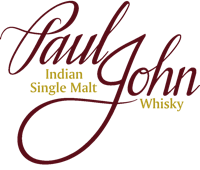Relentless in his pursuit of creating new experiences of drams, Paul John's name has become synonymous with success par excellence. The untiring Chairman-cum-Managing Director of John Distilleries Ltd. is not sitting on his laurels with his eponymous single malts. He is busy putting his ideas to test and coming out with several new single malt variants and other brands soon. The first batch of Paul John's single malt rolled out in October 2012, and is now loved in 38 countries across the world. In a free-wheeling chat with Bishan Kumar he shares his passion and his persistent quest for high quality drams.
Q. Why did you choose Goa for Paul John Single Malt?
I love Goa but more than that its good quality water, climate & humidity, which helps in faster maturation. All these things encouraged me to seriously think about Goa as my single malt destination.
Q. How challenging was this journey to single malt?
It was unchartered territory. We never knew what we were getting into. Moreover, the Scots had marketed it so much that you thought you cannot do anything like they do in Scotland. Moreover, the quality of water has been much talked about there. I made a lot of trips to Scotland to understand the making of single malts. I wanted to convince myself that I am not doing anything wrong and wanted to find out whether I would be able to produce it in India. After multiple trips, tasting of waters from different regions of Scotland, I got some samples back home. I got them tested and then compared them with the water in Goa. I then realised that there is nothing that we did not have that the Scots have. That gave me lot of confidence to start making plans for making my own single malt.
Q. Who were the main people who helped you in pot still distillery in Goa?
We got all designs and final pot still made locally. My brief to the people involved in designing was that since I like more sweeter Scotch whiskies like Glenmorangie Single Malt, the designs have to suit that requirement. I myself did a lot of research on designs and shape of the neck to help in giving sweeter and more flowery notes in my whisky. Based on it, I asked them to create a pot still with a long neck that gives the requited notes. They came out with designs. But of course, it was like driving into an unknown area. I am glad that everything fell in place.
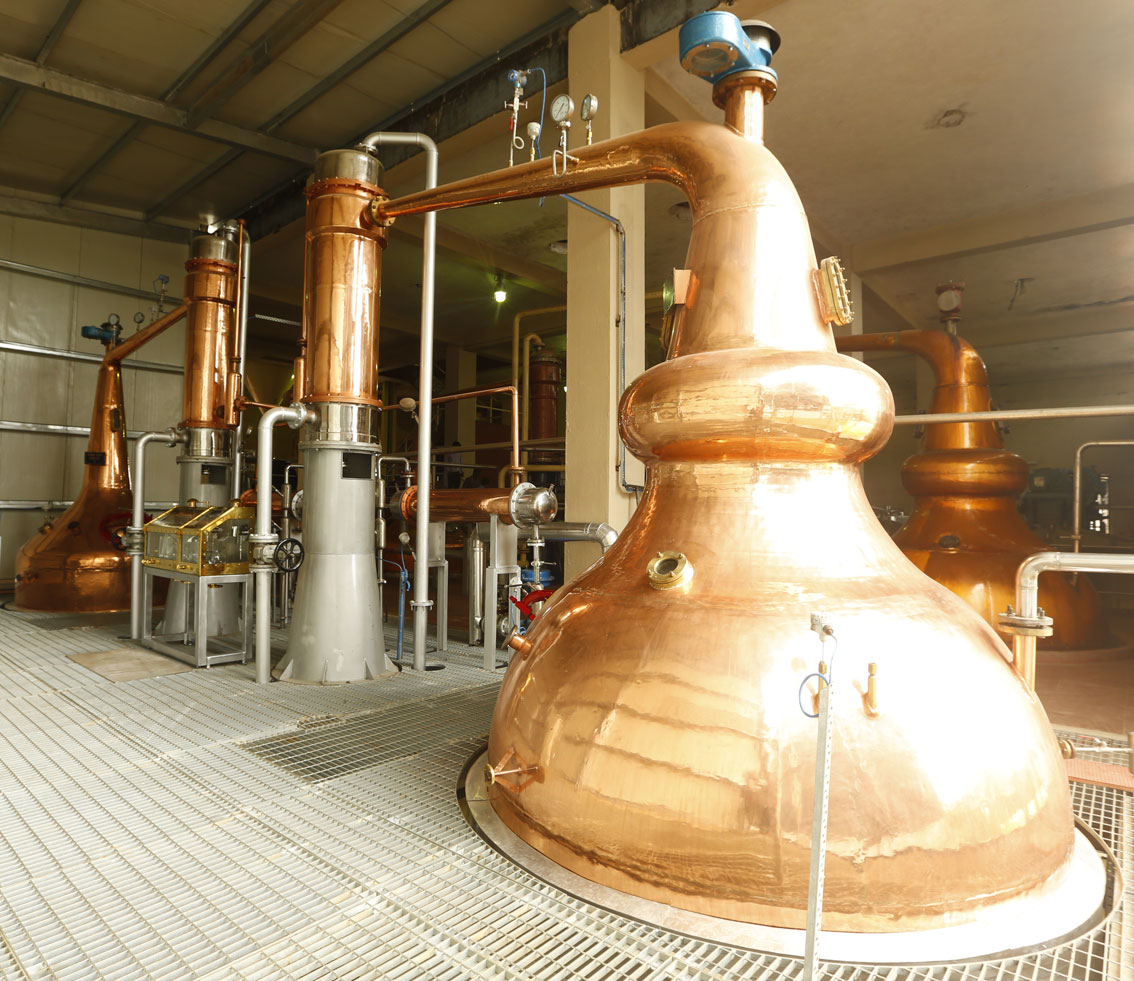
Q. How many variants do you currently have?
I have about 10 or 12 variants, all put together. These include some casks sold to some organisation and companies; for example, casks sold to Scotch Malt Whisky Association. They mention it as Paul John products. There are some big retailers in the UK and Germany who have bought our casks. We have three flagship expressions -Paul John Brilliance, Paul John Edited and Paul John Bold. Brilliance with 46 percent ABV is our flagship variant, selling across the country and we have a slightly higher strength version called Paul John Classic (non-peated) and Paul John Peated at 55 percent and 55.5 percent The higher strength versions are allowed to be sold in Goa. Even selling a 46 percent ABV brand was a challenge. We had to approach most of the states for permission to allow the registration of Brilliant with 46 percent alcohol content.
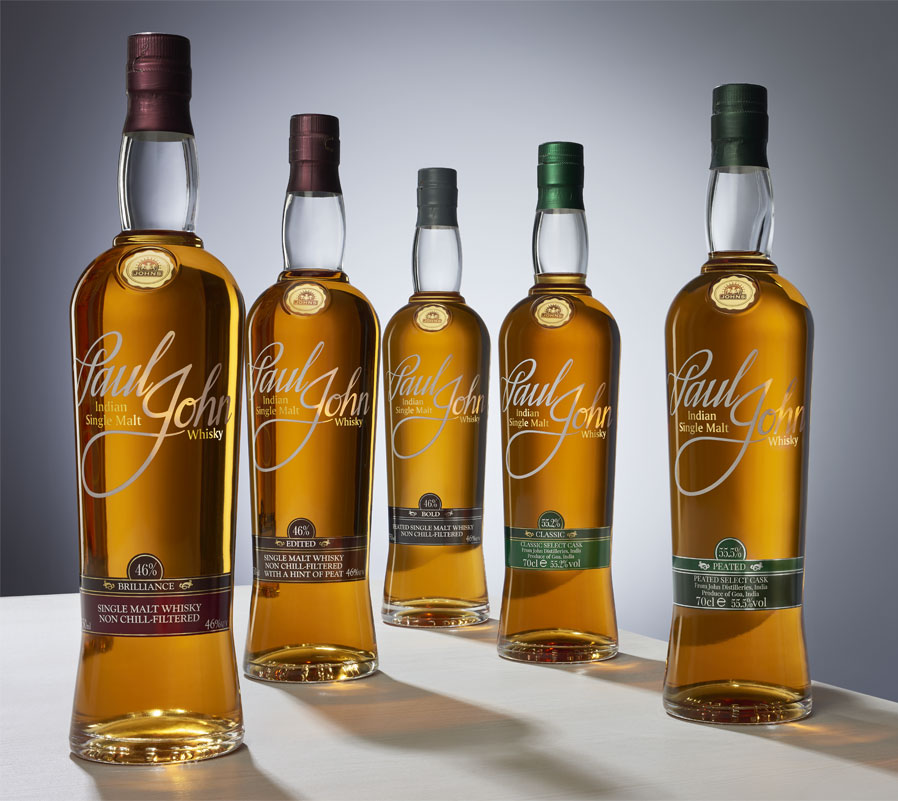
Q. Which one is your driving variant in India?
It is almost equal all over the country, but there are areas where people generally prefer non-peaty whiskies while more serious people go for peated versions. There are select regions which like peated more. Most countries like Germany in Europe prefer peated whiskies. Having said that, the volume of non-peated is equally good.
Q. What kind of casks do you use to mature your single malts?
We have varieties of casks for different variants but we mainly use bourbon casks. After maturing our whiskies in bourbon casks, we mature it again for two-three years in casks like Oloroso and sherry casks for different variants.

Q. Have you ever reached a stage where you & Michael realised that maturing a whisky in a particular cask (like Madeira) is proving to be too expensive and have had to abandon that experiment?
Fortunately, people are really looking forward to tasting limited high-end good quality whiskies. I would say that there is a category of people that has grown from drinking regular whiskies to single malts, more exclusive and limited versions and special editions. Yes, I agree that these are very expensive. Casks like Oloroso which have been used for maturing wines for 40-50 years can prove to be very expensive. Such casks pass on their beautiful characters and notes to single malts when matured there. Such special editions will definitely be very expensive. Surely, there is a demand for such special editions but they cannot be produced for mass consumption.
Q. As Chairman of a company which has done pretty well over the years, are you conservative or experimental in your approach?
If I were not an experimentative person, I would not have done something which no one had done in India. I love to take challenges, love to do things that are out of the box. I was the first one to add malt in that category, add Guala caps on our bottles,and introduce tetra packs for Original Choice whisky. In Karnataka, 65 percent of 11-12 million cases of our Original Whisky is sold in tetra pack. That has caught up in the South India, and I will slowly do the same in North India as well.
Q. What is the next experiment we can expect from you?
We are experimenting with many things. We are experimenting with whiskies, we are working on a real high-end Cognac quality brandy. This has been going on for the last six years. We are experimenting with something very good and it will come out soon.
Q. You would be launching other single malt variants also?
A lot of R&D is going on. I am very excited as a whole new world is opening up. Even in single malt category also, there is so much happening. Just recently, we had launched a very limited Christmas edition of Paul John Single Malt called Christmas Edition. It is one of the finest whiskies launched so far. It is so complex with a bit of Oloroso into it. The opportunities are endless. We do not add any artificial colour or flavour in our whiskies, everything is natural. The colour & notes you get in Paul John variants are due to their marriage with wood during maturation. It all depends on what casks you mature in, how you mature for peated and non-peated whiskies.
Q. How much are you involved in deciding on the characters of whiskies or do you leave it completely on your Master Distiller Michael?
I am very particular about it as my name is there on the bottles. Every decision is taken with utmost care. We work very well as a team. Michael has been a great support. It is interesting to know his background. Michael has no formal training in distillation but he has picked up knowledge and acquired good understanding of his whiskies, that too, all by himself.
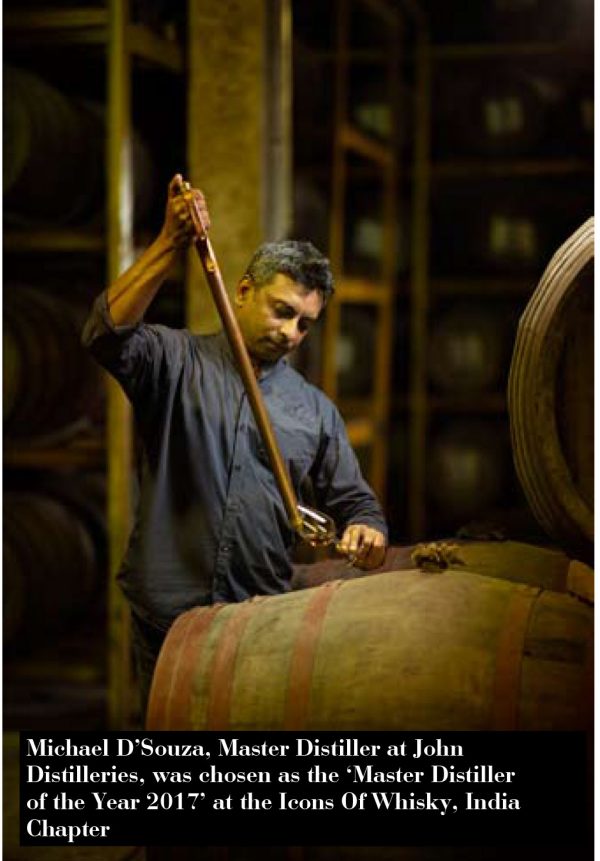
Q. Do you have enough quantities of mature malts or do you buy from outside?
We have enough stock and do not buy even a single drop from anyone. Even a Japanese company bought malts from us. I have about 1.2 million liters of whisky maturing in different states already. Moreover, we have increased our capacity to 6000 liters every day. I am looking forward to keeping an eye on it but it is very tricky to ascertain where I will be six years from now. If I produce too much, I will land up in huge pile of debts , thanks to unsold stock. And if I do extremely well and there is bigger demand, I may not have enough stock to meet the demand. Both the situation could be detrimental to my business. However, the way we are getting response for our single malts, I am quite confident that we will do well.
Q. How does Sazerac picking up stocks in your company help your business?
Sazerac is a wonderful company. They have great brands and I am looking forward to working with them. We are already focusing on launching some of their internationally known brands like Fireball in India. They can help us in spreading the footprint on our brands abroad because of their solid international presence and network.
Q. Do you end up losing a lot to evaporation at Goa?
Yes, but there is another part to it as we are able to compete with 22 and 24-year-olds and win awards. The heat and humidity helps our whiskies to mature much faster. We don't make any age statement as we don't believe that age determines quality.
Q. Would you ever make age statement on the labels?
It will be very challenging for us, as we may end up having one teaspoon in a cask after maturing for a certain number of years. However, we wish to create newer experiences and are working on re-vatting and putting them in other casks .Of course, this will be very expensive. I am sure some people will be willing to pay for the quality.
Q. What brought you into the alcohol business?
My father was in the alcohol business in Karnataka. At one point in time he had about 38 retail shops and was also in the distribution business. After finishing my college, I put up a distillery and in 1992, I launched my first brand called Master whisky. Later, in 1995, we came out with Orginal Choice which was well thought out and it did well. Later, I went to the USA, started drinking wine and tasted some single malts. This caught my attention and I started thinking why not make my own single malt in India. I did a lot of research and thinking, and finally decided to get pot still designed and made in India. It is completely 100 percent Indian; design specifications were given and finalised here. Some good copper pot makers in Gujarat made it for us. It is pretty much simple if you follow procedures and don't cut corners. For example, our installed capacity was 3000 liters per day but to maintain the quality we want we were getting only 2000 liters. I could have pumped up the production to 3000 liters but that would mean compromising the quality.
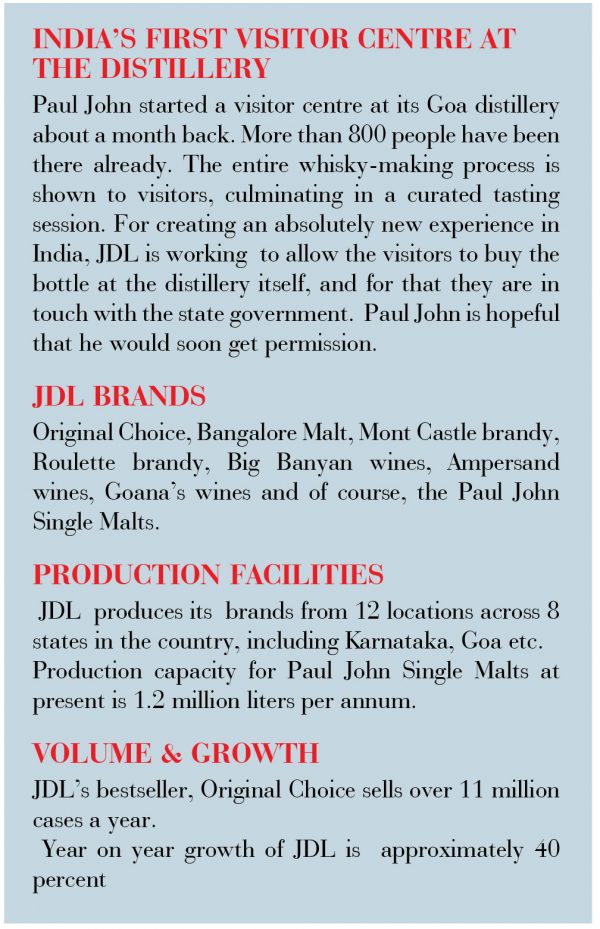
To read original news, Click Here.



